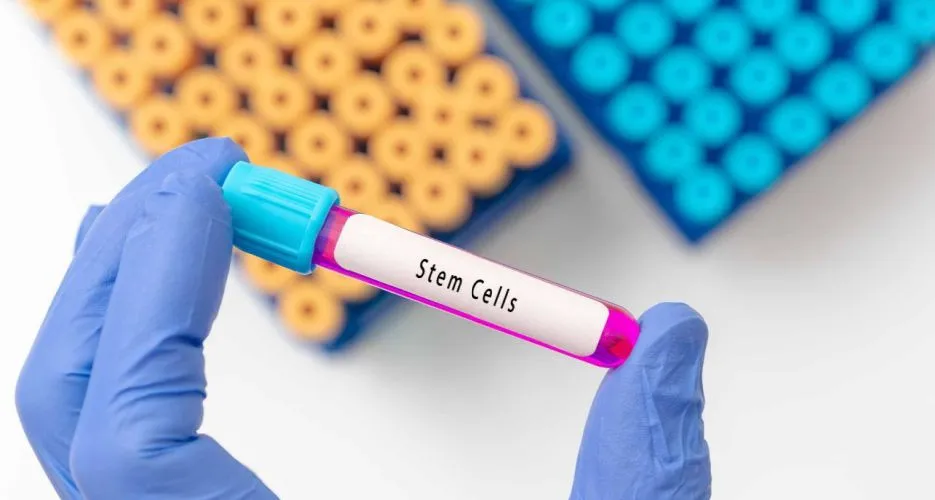The Importance of Light Chain Levels for Multiple Myeloma Patients

One of the key myeloma markers doctors and patients track in myeloma are light chain levels. What are light chains? An important part of our immune systems are our immunoglobulins - disease fighting immune cells. Each of these immunoglobulins have a light chain (like kappa or lambda) and a heavy chain (like IgG, IgA, IgM, etc).
One of the key markers that myeloma doctors pay attention to are 1) the involved light chain for your type of myeloma (kappa or lambda) and 2) the kappa/lambda light chain ratio. In myeloma patients, these numbers are typically abnormal. These values and ratios are widely used to monitor disease activity, response to treatment and determine prognosis. They provide important clues to doctors to help tailor the treatment protocols.
In a recent paper, Chinese researchers from the Affiliated Hospital of Southwest Medical University in Sichuan, China wanted to study the relationship between light chain levels and how it impacts the behavior of the disease. In myeloma, some patients can live over a decade while some with more aggressive disease can live just months or years. They wanted to see if the aggressiveness of myeloma or response to therapy could be predicted based on light chain levels based on medical literature available on electronic databases (such as Pubmed, Science Direct, Ovid and Wiley).
They found general consensus with a few exceptions.
Extremely High Light Chains at Diagnosis
To assess the importance of baseline values at diagnosis, the researchers observed that patients who had exceptionally high serum free light chains (SFLC) over 1000 mg/dL had worse overall survival.
- 15 patients enrolled in a study had SFLC greater than 1000 mg/dL. Median age was 60.81 and median survival was 1.85 years. Nine of these patients received an auto transplant with median survival of 2.44 years.
- Blood (serum) free light chain test results were more accurate than the urine free light chain tests.
- Researchers found one study evaluating 24 patients stated that baseline serum free light chains was not a predictor of recurrence. (Tate, et al.)
High Light Chains After Treatment
Numerous studies have shown that responses to myeloma treatment can be evaluated through serum free light chain levels.
- In a study with 493 British patients diagnosed with multiple myeloma, the SFLC was evaluated for 17 of these patients and concluded that the SFLC number was more indicative of response to therapy than was the involved immunoglobulin number (such as levels of IgG, IgA, etc).
- Another study of 36 myeloma patients measured SFLC levels after chemotherapy. Patients who started with a baseline of >75 mg/dL had their light chain levels decrease by one fifth after treatment. Patients with a partial response (PR) showed a light chain decrease of 23.6 percent. Patients with a very good partial response (VGPR) showed a light chain decrease of 52.3 percent. The study concluded that early reduction in free light chain values was helpful to assess chemo response.
- Another study showed that free light chains of over 100 mg/L after treatment represented a poor progress-free and overall survival.
- A study of 38 patients in Thailand showed that overall survival depended mostly on the response after the first cycle of chemotherapy. Patients who had more than a 50% reduction in SFLC levels had 88% two-year survival. Patients who had less than a 50% reduction in SFLC levels had 53.1% two-year survival.
The Importance of Normal Kappa/Lambda Ratios
The ratio of kappa to lambda may also predict survival and progression of disease.
- In a study of 126 myeloma patients after treatment, 34 patients demonstrated complete response, 37 very good partial response, 39 partial response and 16 exhibited constant disease pattern at 28 months follow-up. Fifty-two patients had normal kappa/lambda ratios (3-year survival of 94%) compared to patients with abnormal ratios (3-year survival of 48%).
- In another study, 94 Greek myeloma patients were enrolled and their SFLC ratio was calculated. According to final results, patients in the "low" ratio group had three-year survival (94%) and five-year survival (82%). patients in the "high" ratio group had three-year survival (58%) and five-year survival (30%). It was deduced that serum free light chains ratio is an independent marker of prognosis.
- A United States study of 586 smoldering myeloma patients (Larsen) showed that an abnormally high SFLC ratio indicates an imminent progression of the disease. The risk of progression in patients with SFLC ratio of 100 or more was 72% in the first two years. It was recommended that patients with SFLC ratio of 100 or more were at high risk of progression and treatment was necessary for these patients.
- In another Italian study of 150 myeloma patients, patients were divided into three groups on the basis of SFLC ratio, group 1: normal, group 2: lightly abnormal (<100) and highly abnormal (>100). Progression free survival was 72% for the normal group, 61% for the lightly abnormal group and 41% for the highly abnormal group. Patients who achieved a normal SFLC ratio had longer overall and progression-free survival.
- A counter-argument Spanish study (Lopez-Anglada et al.) of 819 patients concluded that an abnormally high SFLC ratio was not significantly related to progression. It was proposed that normalization of SFLC ratio did not indicate a superior response among patients who attained complete response.
In general, extremely high serum free light chains indicate refractory disease while minimal elevation at baseline and normalization after chemotherapy is considered to be a favorable sign. Similarly, highly abnormal ratios indicate poor outcomes while the effectiveness of chemotherapy was reflected by normalization of these ratios.
Comparing your light chain values and ratios at diagnosis and after treatment can be an effective way to assess how well your treatment is working.
To keep track of your light chain levels using an online tool, join HealthTree.org.
One of the key myeloma markers doctors and patients track in myeloma are light chain levels. What are light chains? An important part of our immune systems are our immunoglobulins - disease fighting immune cells. Each of these immunoglobulins have a light chain (like kappa or lambda) and a heavy chain (like IgG, IgA, IgM, etc).
One of the key markers that myeloma doctors pay attention to are 1) the involved light chain for your type of myeloma (kappa or lambda) and 2) the kappa/lambda light chain ratio. In myeloma patients, these numbers are typically abnormal. These values and ratios are widely used to monitor disease activity, response to treatment and determine prognosis. They provide important clues to doctors to help tailor the treatment protocols.
In a recent paper, Chinese researchers from the Affiliated Hospital of Southwest Medical University in Sichuan, China wanted to study the relationship between light chain levels and how it impacts the behavior of the disease. In myeloma, some patients can live over a decade while some with more aggressive disease can live just months or years. They wanted to see if the aggressiveness of myeloma or response to therapy could be predicted based on light chain levels based on medical literature available on electronic databases (such as Pubmed, Science Direct, Ovid and Wiley).
They found general consensus with a few exceptions.
Extremely High Light Chains at Diagnosis
To assess the importance of baseline values at diagnosis, the researchers observed that patients who had exceptionally high serum free light chains (SFLC) over 1000 mg/dL had worse overall survival.
- 15 patients enrolled in a study had SFLC greater than 1000 mg/dL. Median age was 60.81 and median survival was 1.85 years. Nine of these patients received an auto transplant with median survival of 2.44 years.
- Blood (serum) free light chain test results were more accurate than the urine free light chain tests.
- Researchers found one study evaluating 24 patients stated that baseline serum free light chains was not a predictor of recurrence. (Tate, et al.)
High Light Chains After Treatment
Numerous studies have shown that responses to myeloma treatment can be evaluated through serum free light chain levels.
- In a study with 493 British patients diagnosed with multiple myeloma, the SFLC was evaluated for 17 of these patients and concluded that the SFLC number was more indicative of response to therapy than was the involved immunoglobulin number (such as levels of IgG, IgA, etc).
- Another study of 36 myeloma patients measured SFLC levels after chemotherapy. Patients who started with a baseline of >75 mg/dL had their light chain levels decrease by one fifth after treatment. Patients with a partial response (PR) showed a light chain decrease of 23.6 percent. Patients with a very good partial response (VGPR) showed a light chain decrease of 52.3 percent. The study concluded that early reduction in free light chain values was helpful to assess chemo response.
- Another study showed that free light chains of over 100 mg/L after treatment represented a poor progress-free and overall survival.
- A study of 38 patients in Thailand showed that overall survival depended mostly on the response after the first cycle of chemotherapy. Patients who had more than a 50% reduction in SFLC levels had 88% two-year survival. Patients who had less than a 50% reduction in SFLC levels had 53.1% two-year survival.
The Importance of Normal Kappa/Lambda Ratios
The ratio of kappa to lambda may also predict survival and progression of disease.
- In a study of 126 myeloma patients after treatment, 34 patients demonstrated complete response, 37 very good partial response, 39 partial response and 16 exhibited constant disease pattern at 28 months follow-up. Fifty-two patients had normal kappa/lambda ratios (3-year survival of 94%) compared to patients with abnormal ratios (3-year survival of 48%).
- In another study, 94 Greek myeloma patients were enrolled and their SFLC ratio was calculated. According to final results, patients in the "low" ratio group had three-year survival (94%) and five-year survival (82%). patients in the "high" ratio group had three-year survival (58%) and five-year survival (30%). It was deduced that serum free light chains ratio is an independent marker of prognosis.
- A United States study of 586 smoldering myeloma patients (Larsen) showed that an abnormally high SFLC ratio indicates an imminent progression of the disease. The risk of progression in patients with SFLC ratio of 100 or more was 72% in the first two years. It was recommended that patients with SFLC ratio of 100 or more were at high risk of progression and treatment was necessary for these patients.
- In another Italian study of 150 myeloma patients, patients were divided into three groups on the basis of SFLC ratio, group 1: normal, group 2: lightly abnormal (<100) and highly abnormal (>100). Progression free survival was 72% for the normal group, 61% for the lightly abnormal group and 41% for the highly abnormal group. Patients who achieved a normal SFLC ratio had longer overall and progression-free survival.
- A counter-argument Spanish study (Lopez-Anglada et al.) of 819 patients concluded that an abnormally high SFLC ratio was not significantly related to progression. It was proposed that normalization of SFLC ratio did not indicate a superior response among patients who attained complete response.
In general, extremely high serum free light chains indicate refractory disease while minimal elevation at baseline and normalization after chemotherapy is considered to be a favorable sign. Similarly, highly abnormal ratios indicate poor outcomes while the effectiveness of chemotherapy was reflected by normalization of these ratios.
Comparing your light chain values and ratios at diagnosis and after treatment can be an effective way to assess how well your treatment is working.
To keep track of your light chain levels using an online tool, join HealthTree.org.
about the author
Jennifer Ahlstrom
Myeloma survivor, patient advocate, wife, mom of 6. Believer that patients can contribute to cures by joining HealthTree Cure Hub and joining clinical research. Founder and CEO of HealthTree Foundation.
More on Treatment Advances
Trending Articles




Get the Latest Multiple Myeloma Updates, Delivered to You.
By subscribing to the HealthTree newsletter, you'll receive the latest research, treatment updates, and expert insights to help you navigate your health.
Together we care.
Together we cure.
3x Faster.












